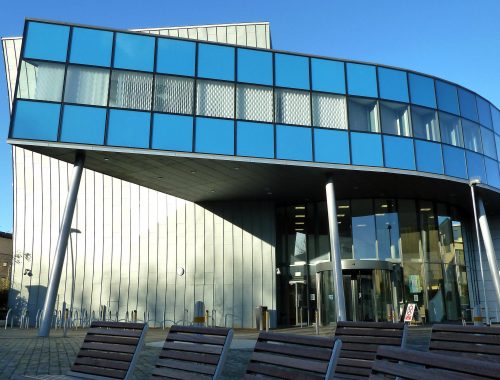Make it Simple, but Significant
Applying for a job?
You can be 99% sure companies will ask for a Curriculum Vitae as it is known in Latin but for short it’s commonly known as a CV in Europe. A CV is a document that is used to summarise your education, skills and experience when applying for a job. When you start off, you may think that a CV equals a job. When in fact it only gets you to the scary interview phase. I like to view CVs the same way I would my dating profile page. How can I advertise myself to sound interesting, stand out, but most of all suit the job I am applying for in a competitive market? According to James Reed, chairman of recruitment company REED, in his book it says
“It takes an employer just seven seconds to save or reject a job applicant’s CV.”
The 7 Second CV

In this blog…
I will reflect upon my time applying for placements using Gibbs’ Model of reflection model (Fig 1) that includes: A description of my experience. How these experiences made me feel? Then, looking for the positives and negatives of the experience. The analysis is explaining why it was positive or negative. It is then important to focus on what you have learnt from this experience and make a plan on what to do next time to try and minimise the negatives.
According to Taylor (1986) ‘Reflection is an important human activity in which people recapture their experience, think about it, mull it over and evaluate it. It is working with experience that is important in learning.’
Description
When I first decided to take this module, I was quite hopeful of getting a placement. At the start of summer, I contacted several companies via email explaining to them who I was and what I was asking from them along with my CV. Quietly confident of perhaps starting my placement and completing the 100 hours set before university resumed. So I waited… and waited… and waited. No reply from anyone, only automatic replies from a couple of accounts. I did manage to obtain a number for the production manager of the Belfast Giants but at that point they were not in contract with the SSE and he said he would get back to me when their contract was agreed.
Feelings
Feeling a little disheartened, I decided not to continue with applying for placement positions at that stage and to go a different route. Through my own doing, I started to gain a bit of client work for social media pages, therefore, I requested to use my placement hours to build my own business from scratch. In the meantime, I decided to try and build and improve my CV. I believed that it was the reason why I wasn’t receiving anything back from organisations. It was time to completely remake it from top to bottom. I changed the design to a more creative styled layout. Using the most of the space provided I divided it into sections adding colour and icons for a more eye friendly appearance. I also updated my showreel from 2 years ago and added it to the top with an external link for easy access.
Evaluation
With my new shiny CV now complete, I decided it was time to try again to apply for industry work. My thought was I could do both a media job and use that experience to help grow my own company at the same time. The timing was perfect as David Lowry from Belfast Giants replied to me requesting a CV. This response was what I spent my time updating and tweaking over the summer was for. We then organised a phone call interview and said he was impressed with my CV and offered me the placement, which is where I find myself now. (Fig. 2) At the time of writing I have completed four games as camera operator in the SSE. I am enjoying working under the pressures that come with a live audience and broadcasting stream in sports media, which is something I have always had an interest in. This gave me confidence because what I did was obviously effective and I am now benefitting from my own self-improvement.
Analysis
“It is not sufficient simply to have an experience in order to learn. Without reflecting upon your experience, it may quickly be forgotten, or its learning potential lost” (Gibbs, 1988). Reflection is a repetitive exercise. We consciously think about the events that have happened, the actions we take, how this makes us feel, and our reactions to the corresponding events. We then evaluate these thoughts and feelings in order to gain insight into ourselves and our practice. We use this insight to perform better in future experiences. Educators and writing practitioners believe that reflection is a decisive feature of student portfolios (Fink 2003; Zubizarreta 2004; Jones and Shelton 2006). A portfolio without any kind of reflection is simply a collection of written work that does not provide to any real learning. Fink states, reflective writing “focuses on the writer’s learning experience itself and attempts to identify the significance and meaning of a given learning experience.”
Conclusion
To conclude, Moon states “Students need guidance that cuts across the theoretical approaches, enabling them to use reflection to enhance their learning in practice.” Reflecting on my application experience from the summer, I am now more self-aware of how important a CV really is and how every detail is so crucial to getting over that first hurdle of even being considered for a job. From the 9th week of the course, I gained more knowledge on the subject and found that there is still room more improvement and development in my CV.
Action Plan
“Make it simple, but significant.” a quote from Don Draper from the TV Series Mad Men. I have found out that keeping it simple is the best trick to use. Making it significant is the hard part, through research I am now aware of and understand how to write a good CV and will be prepared of my next application that will inevitably come in the near future.

Work Cited
Belfast Giants vs Manchester Storm @ SSE Arena Belfast 20 November 2021 highlights YouTube Link- https://www.youtube.com/watch?v=cEtQpDtGjWI
Fink, L.D. Creating Significant Learning Experiences: An Integrated Approach to Designing College Courses. 2003.
Gibbs, G. Learning by Doing: A Guide to Teaching and Learning Methods. Oxford: Oxford Further Education Unit. 1988.
Kathpalia, S. S., & Heah, C. Reflective writing. RELC Journal, 39(3), 300–317. 2008. from https://doi.org/10.1177/0033688208096843
Moon, J. A. Reflection in learning and professional development: Theory and practice. Routledge. 2015.
Reed, J. The 7 second Cv: How to land the interview. Virgin Books. 2019.
Director Scott Hornbacher Mad Men, Season 4 ep. 6, 2010. Amazon Video https://www.amazon.co.uk/gp/video/detail/amzn1.dv.gti.a0a9f685-5ad9-ec96-b065-663c61b02815?autoplay=1&ref_=atv_cf_strg_wb
Taylor, Elizabeth. “Reflection: turning experience into learning.” pp 297-298. 1986.
Zubizarreta, J. The Learning Portfolio: Reflective Practice for Improving Student Learning ( Association of Supervision and Curriculum Development ; Alexandra, VA): 92-99. 2004.
You May Also Like

First Day Fears
24 November 2021
Facing Avoidance
26 November 2021
